Mercury Photos from NASA's Messenger Probe - Part 2 (April 2011 through 2012)
Hokusai's Molten Past
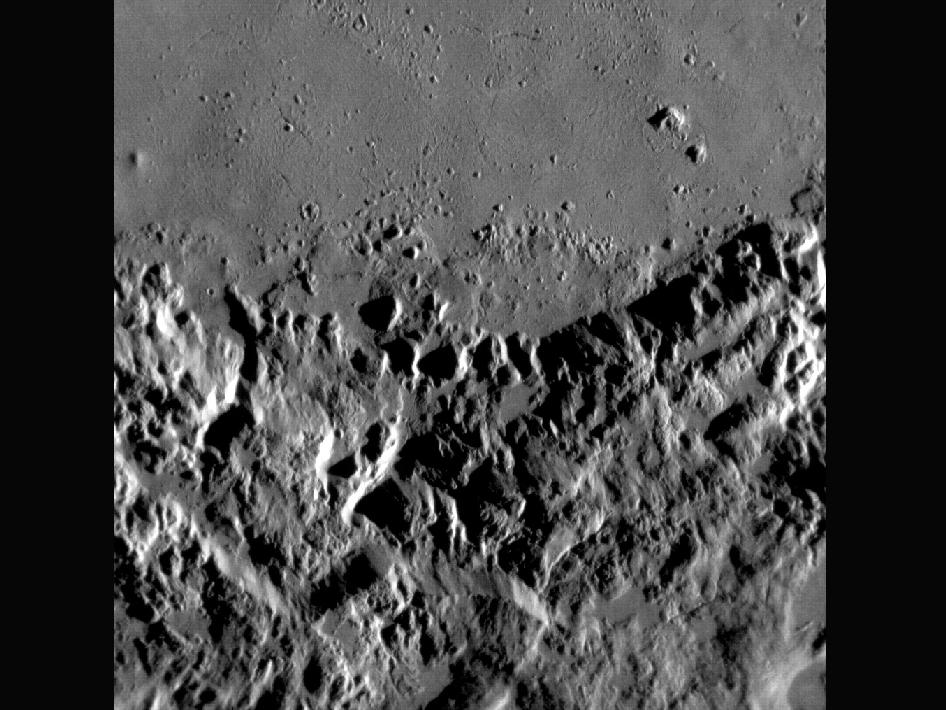
Interplanetary debris strikes the surface of Mercury with such force that portions of the rocky surface at the impact site melt. In this high-resolution image of Hokusai crater's interior and ejecta, you can see the smooth surfaces where impact melt ponded and cooled, forming new rocky plains.
A Sideways Glance
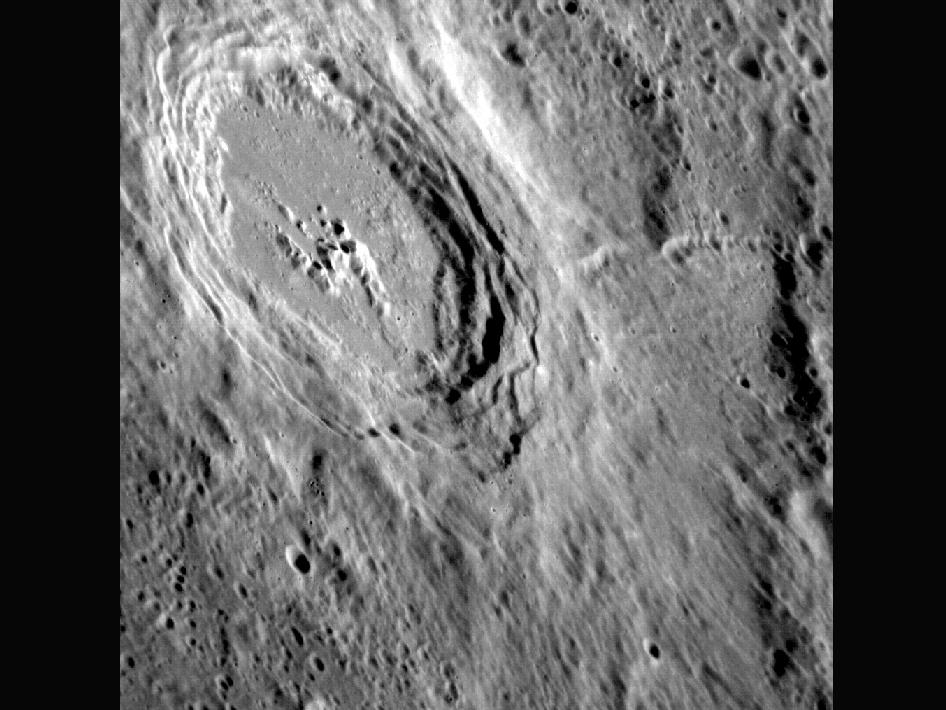
This beautiful oblique view of a fresh impact crater was captured as the MESSENGER spacecraft slewed to the side to get a better look. The primary purpose for this slew was actually so that the Mercury Atmospheric and Surface Composition Spectrometer (MASCS) instrument could collect a reflectance spectrum of the crater's ejecta.
A Secondary Mystery

The unnamed crater in this image is almost exactly halfway between two nearby rayed craters: Qi Baishi and Hovnatanian. Qi Baishi is to the west and Hovnatanian is to the east - are these craters the source of the many elongated secondary craters in the scene? The orientation of the secondaries actually suggests another source to the north: the 225-km Mozart impact basin.
Like a David Lynch Movie
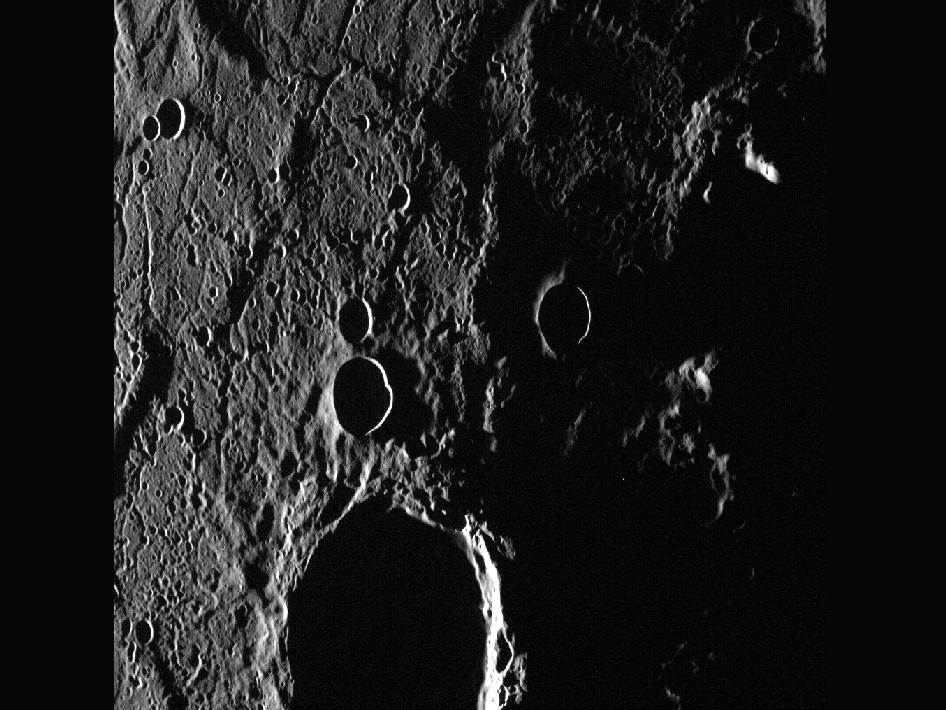
With the sun low in the sky to the west, the interiors of craters are completely hidden in shadow and even the smallest surface features cast shadows. In this light, the cratered interior of the Caloris basin takes on a rough and formidable appearance, though its volcanic plains are actually smoother than much of the planet.
Sliver of a Planet
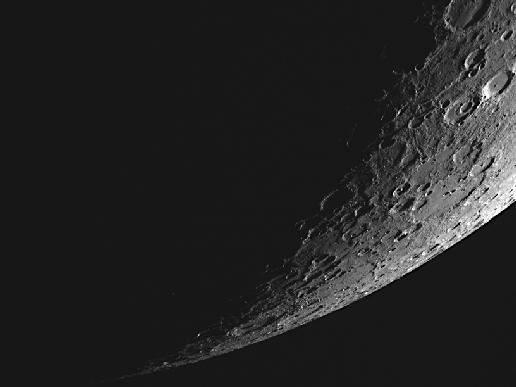
This dramatic view was captured as the spacecraft's highly elliptical orbit positioned MESSENGER high above Mercury's southern hemisphere. The large basin with the smooth floor near the center right portion of the image is Pushkin.
A Ghost Story
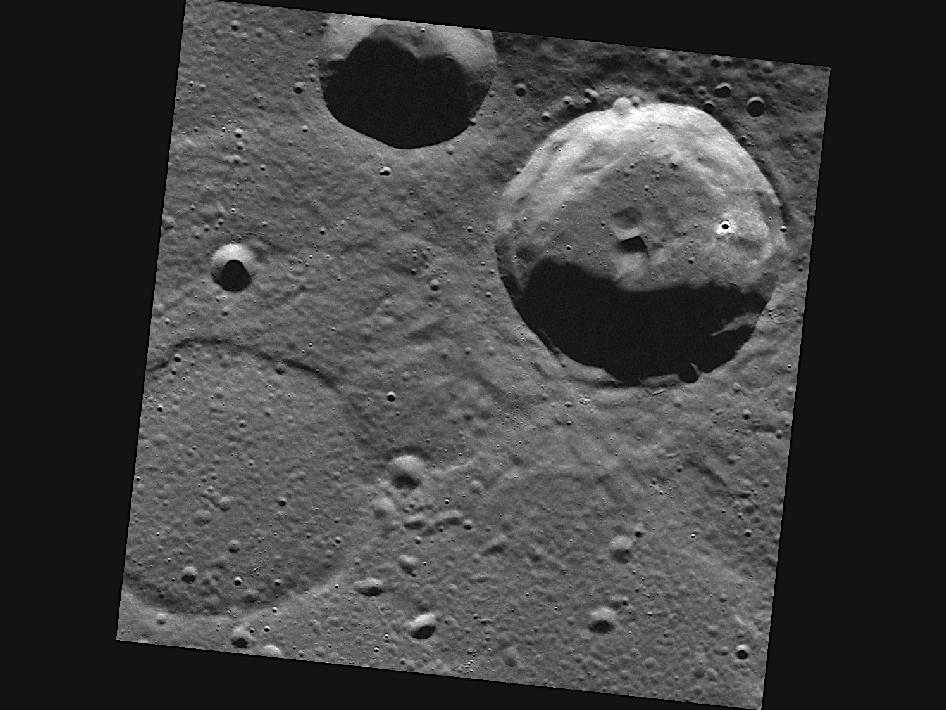
MESSENGER images are enabling the story of Mercury's geologic history to be told. In this scene, there was once a crater that resembled the one in the upper right. Then, volcanic lava flooded the surface, burying the crater and leaving just an outline of the crater's rim, now seen as the "ghost crater" located in the lower left of this image. After extensive flooding in Mercury's north, additional cosmic bodies impacted Mercury's surface, creating the various sized craters seen here.
Ts'ai Wen-Chi and the Long Scarp
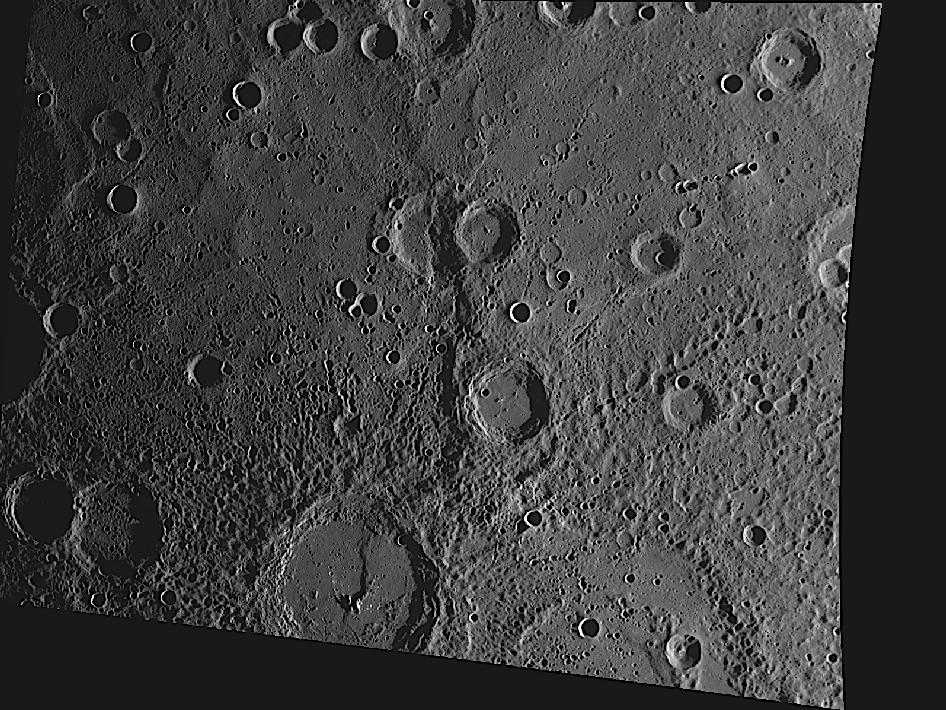
A long scarp runs vertically through the center of this image, deforming pre-existing craters along its length. At the bottom of this image, the scarp cuts through the wall and floor of the crater Ts'ai Wen-Chi (124 km diameter), named for the Han Dynasty poet and composer.
Get the Space.com Newsletter
Breaking space news, the latest updates on rocket launches, skywatching events and more!
Poet's Crater
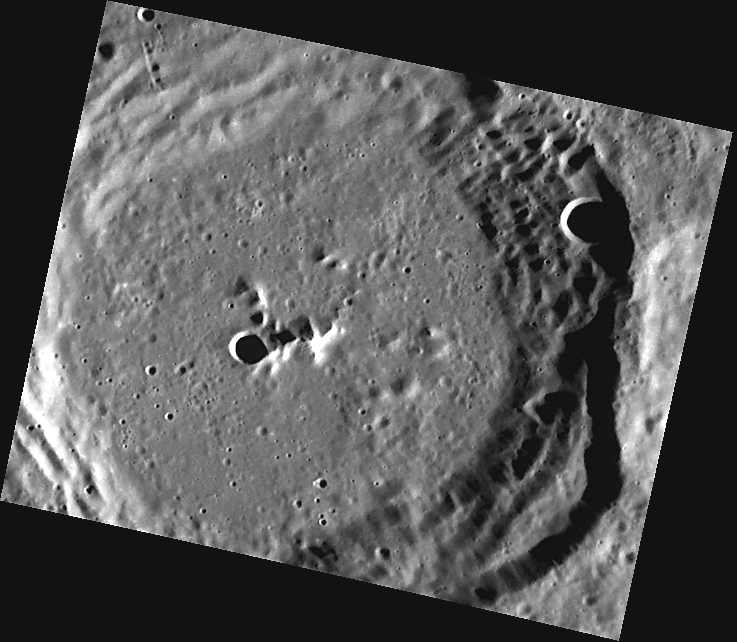
This May 4, 2011 image shows March crater, named for the 15th century Valencian poet Ausiàs March. The faint striations across the wall terraces in the lower right portion of the image may have been caused by landsliding or by emplacement of ejecta from another impact outside the field of view.
Degas crater on Mercury, seen by Messenger
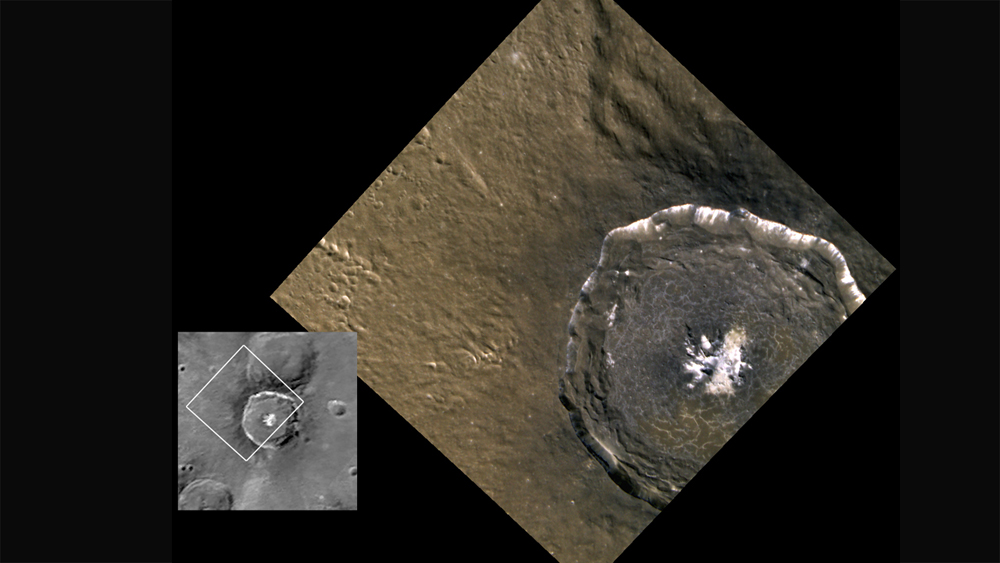
This Messenger view of Mercury's Degas crater (right) was obtained at a resolution of 90 meters per pixel. Impact melt coats the crater's floor; as the melt cooled and shrank, it formed the cracks observed across the crater. The Mariner 10 probe’s view of Degas is shown at left.
Messenger photo of Mercury's northern volcanic plains
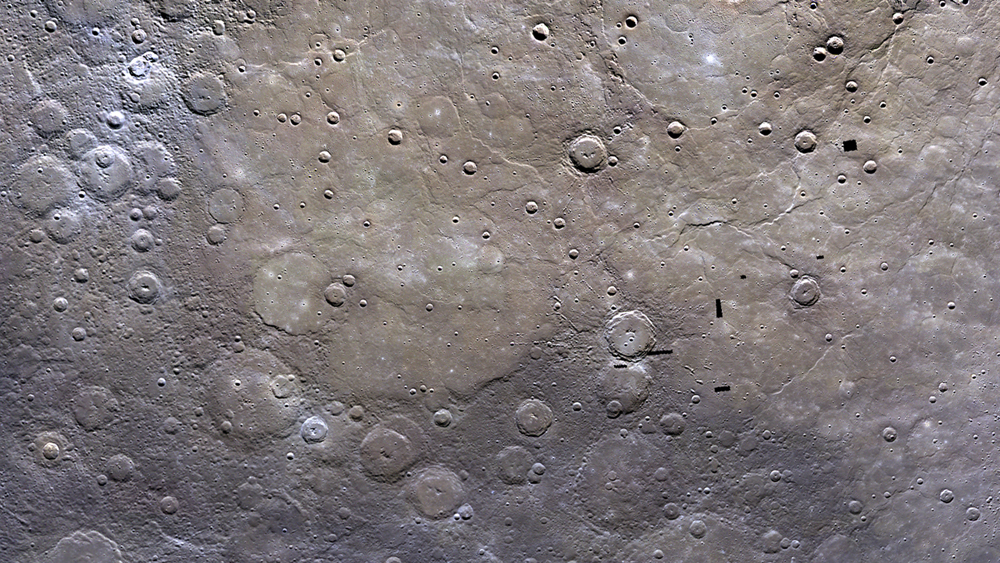
A photo mosaic of Mercury's northern plains, taken from orbit by NASA's Messenger spacecraft.
Join our Space Forums to keep talking space on the latest missions, night sky and more! And if you have a news tip, correction or comment, let us know at: community@space.com.

Space.com is the premier source of space exploration, innovation and astronomy news, chronicling (and celebrating) humanity's ongoing expansion across the final frontier. Originally founded in 1999, Space.com is, and always has been, the passion of writers and editors who are space fans and also trained journalists. Our current news team consists of Editor-in-Chief Tariq Malik; Editor Hanneke Weitering, Senior Space Writer Mike Wall; Senior Writer Meghan Bartels; Senior Writer Chelsea Gohd, Senior Writer Tereza Pultarova and Staff Writer Alexander Cox, focusing on e-commerce. Senior Producer Steve Spaleta oversees our space videos, with Diana Whitcroft as our Social Media Editor.









